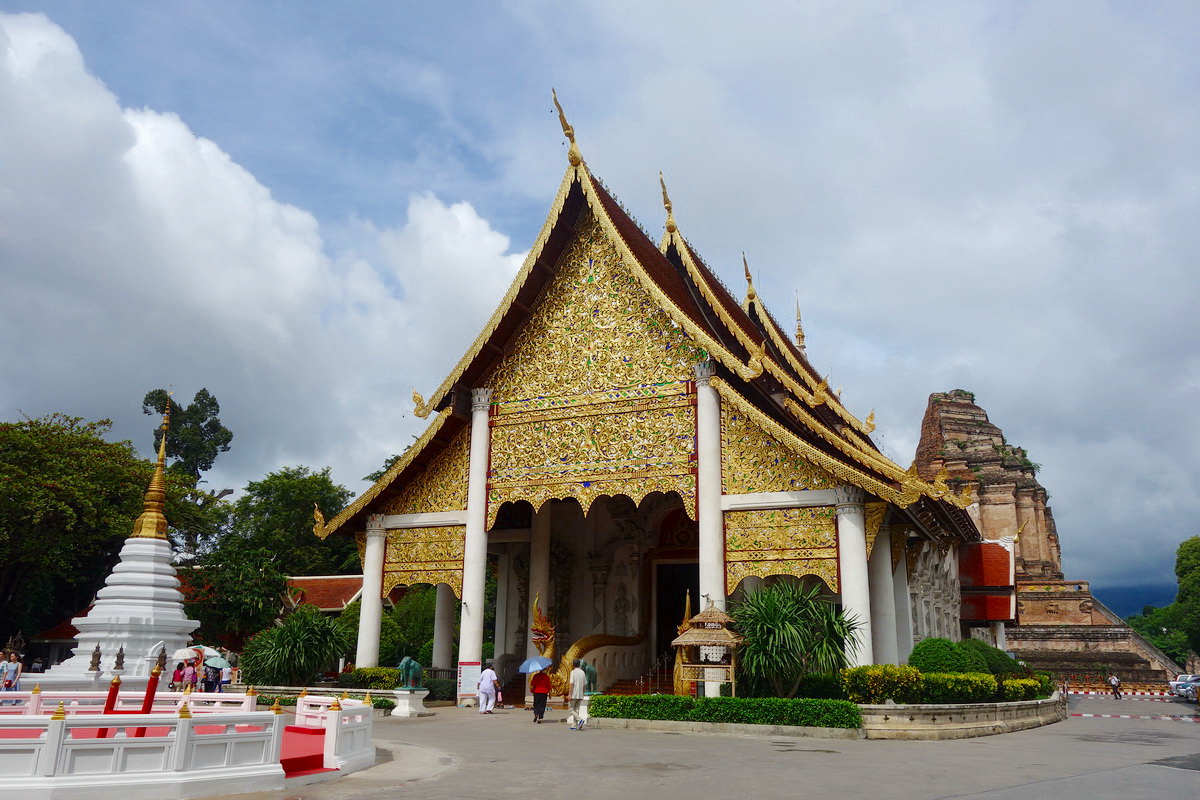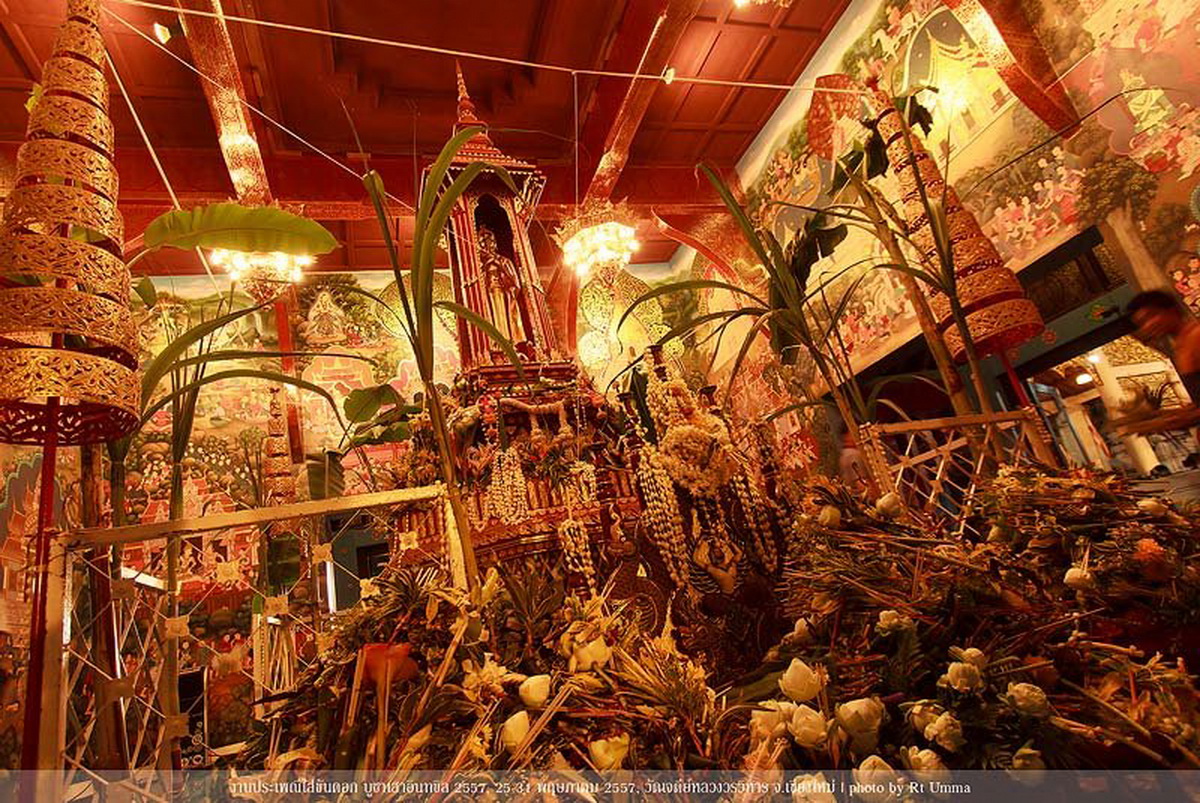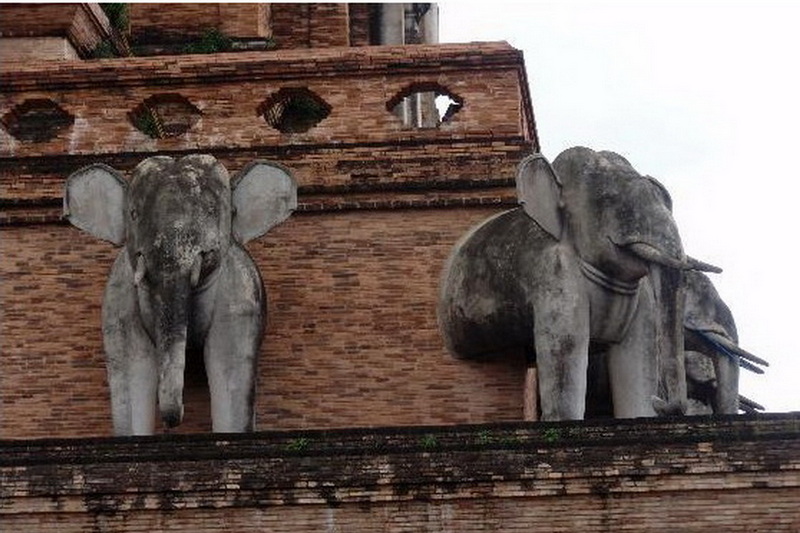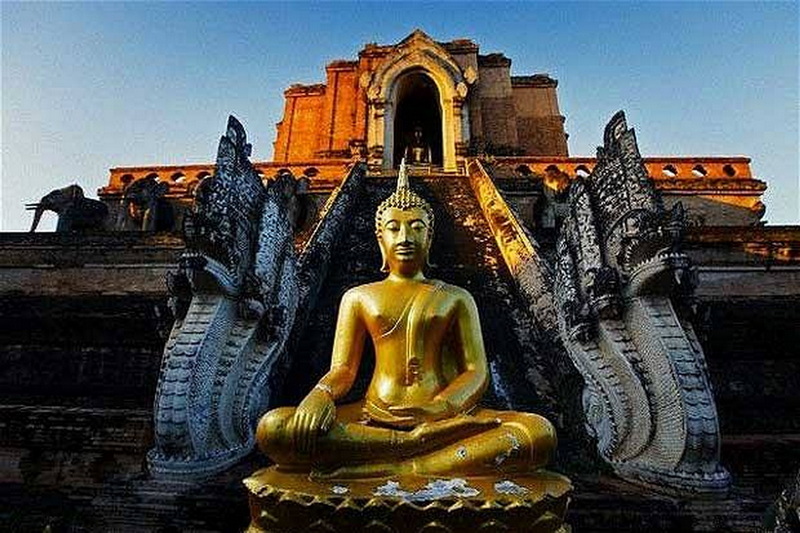Discover the Splendor of Wat Chedi Luang

Unveiling the Historical Significance of Wat Chedi Luang
Nestled in the heart of Chiang Mai, the Chedi Luang Temple, also known as Wat Chedi Luang, is an iconic symbol of the city’s rich heritage. Constructed during the reign of King Saen Muang Ma in the late 14th century, this temple is a testament to Lanna architecture and history. The name “Wat Chedi Luang” translates to “Temple of the Great Stupa,” reflecting the immense size and importance of the structure.


The Massive Chedi
The grand pagoda, once towering at 90 meters, was partially destroyed by an earthquake in 1545. Despite this, the chedi remains an awe-inspiring sight. Its current height of 60 meters still dominates the skyline, making it one of the most significant Chiang Mai attractions. The restoration efforts in the 1990s, supported by UNESCO and the Japanese government, have preserved its grandeur and prevented further degradation. Each side of the chedi features large staircases guarded by mythical Naga serpents, leading to niches that house Buddha images. The chedi’s base is adorned with stone elephants, adding to its visual appeal and historical significance.
Viharn Luang and Phra Attharot
The main viharn, known as Viharn Luang, was constructed in 1928 and is home to the impressive Phra Attharot Buddha image. This towering statue, cast towards the end of the 14th century, stands at 18 cubits tall and is a focal point of worship within the temple. The statue displays the Abhaya mudra, symbolizing protection and fearlessness.
The Two Viharns
Wat Chedi Luang features two viharns. The larger viharn, Viharn Luang, is an architectural marvel with its three-tiered roof and intricate wood carvings. The smaller Viharn Lai Kham is equally impressive, known for its exquisite craftsmanship and historical significance. Both viharns serve as important centers for worship and cultural activities.


The Sao Inthakin or City Pillar
The temple grounds are also home to the revered Sao Inthakin, or City Pillar. This pillar is believed to protect the city of Chiang Mai and is housed in a small pavilion within the temple complex. The Inthakin Pillar holds significant spiritual value and is the center of annual ceremonies aimed at ensuring the city’s prosperity and well-being.
The Emerald Buddha and the Temple’s Cultural Significance
In 1468, the most revered Buddha image in Thailand, the Emerald Buddha, was installed in Wat Chedi Luang. This significant event marked the temple as a central place of worship in the Lanna Kingdom. Although the Emerald Buddha was moved to Luang Prabang and later to Bangkok, a replica now resides in one of the niches of the chedi, commemorating its historical presence.
Exploring the temple grounds, you’ll encounter the daily Monk Chats, where monks are available to discuss Buddhism and their way of life. This interactive experience offers visitors a deeper understanding of the temple’s spiritual significance. The temple also houses a small pavilion with a Reclining Buddha and a bell tower, adding to its architectural diversity.


Why You Should Visit Chedi Luang Temple
Chedi Luang Temple isn’t just a historical monument; it’s a place where culture, spirituality, and community come together. The temple’s serene atmosphere, combined with its rich history, offers a unique glimpse into the soul of Chiang Mai. Whether you’re exploring the ancient structures or engaging in a conversation with a monk, Wat Chedi Luang provides an unforgettable experience. Participating in the Monk Chats is a highlight, allowing for a meaningful exchange that enhances your understanding of Thai culture and religion.
Embark on a journey to discover the timeless beauty and spiritual depth of Wat Chedi Luang. Book your Chiang Mai Day Tour now and immerse yourself in the heart of Lanna culture. This experience is not only enlightening but also deeply enriching, making it a must-visit on any trip to Chiang Mai.
